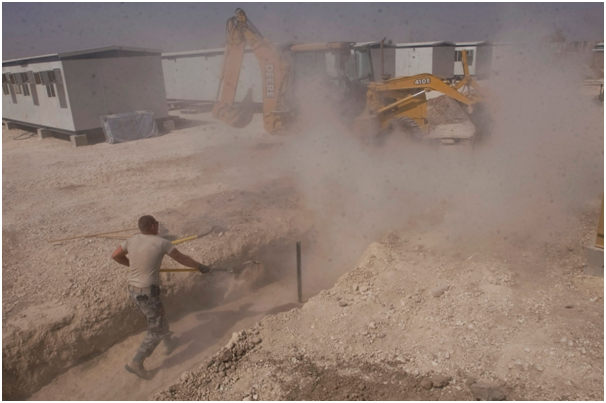Excessive levels of dust in the workplace can be dangerous on several levels – not simply as a catalyst for dust-related illness but also the risk of combustion or accidents caused by reduced visibility.

There is a general duty for workplace managers to ensure that workers are not exposed to risk. This was established in the Health and Safety at Work etc. Act 1974, and general principles for protection against dust are outlined in the HSE booklet ‘Dust in the Workplace’. The Control of Substances Hazardous to Health (COSHH) 2002 Regulations were introduced to give workers additional protection when working with certain substances, although asbestos and lead are covered by their own separate regulations.
Do You Have a Dust Problem?
Dust can occur in almost any industry, and exposure needs to be prevented or controlled. The effects of dust on health can vary but include skin irritation, respiratory problems and certain cancers. Unfortunately, as dust is not always visible to the naked eye, it is not an obvious hazard. In addition, dust-related illnesses can take years to develop. The use of a dust lamp may help you to identify the presence of ‘invisible’ dust.

Prevention and Control
Never assume that dust is safe. Any work undertaken in dusty conditions has the potential to impact adversely on health. Conversely, not all dust is equally hazardous, but an employer’s duty under COSHH states that exposure must be prevented or controlled.
Preventative measures might including changing handling techniques for certain materials, using pellets rather than powder and replacing hazardous materials with less toxic ones. Control measures will help you to minimise the impact of dust when it cannot be eliminated entirely and may include the use of appropriate personal protective equipment (PPE) such as goggles, respirators and coveralls and dust extraction by local exhaust ventilation (LEV).
Using LEV for Dust Control
Your LEV system must be checked at least once every 14 months and components like the Ductwork Blast Gate Damper maintained and replaced if necessary with spares from a trusted supplier like https://www.dustspares.co.uk/Blast-Gate-Damper.html to keep the system running efficiently.
The HSE recommends using LEV as a first priority for dealing with dust, suggesting that your systems are built into or designed for the machine or process that creates the dust problem for the greatest efficiency and effectiveness.


